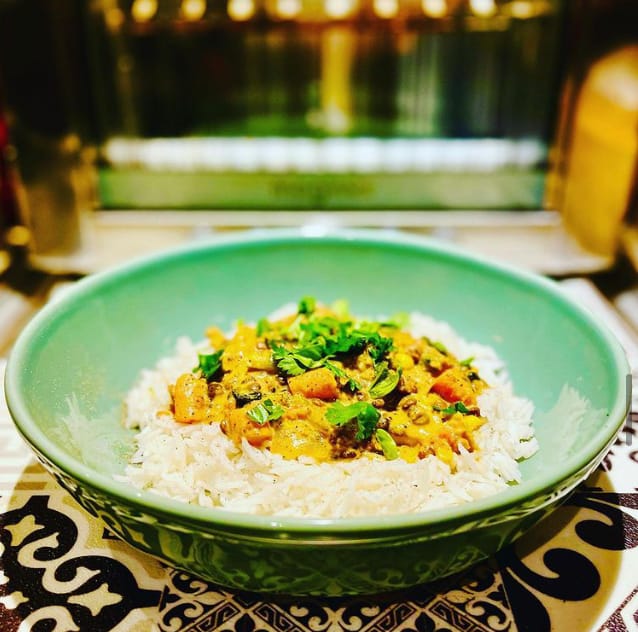Since ancient times, Pulses—the edible dried seeds within the pod of a legume plant—have provided food for humans and animals. Due to their versatility, affordability and nutritional benefits, they’re celebrated each year on February 10th during the United Nations observance of World Pulses Day.
From climate resilience to food security, these seeds and beans may be the most underrated food source in nature’s repertoire.
This is why…
Good for Us
When we think of delicious foods like spicy hummus made from chickpeas or a classic like English beans on toast, we may not realise how healthy the legumes they’re made from truly are. Pulses such as these are low in fat, high in fibre and packed with plant-based protein. Even better, they can be stored for months without losing any of their nutritional value, securing food availability between harvests.
For those with food allergies and intolerances, pulses are among the ‘safest’ foods to consume as they’re gluten-free, non-GMO and dairy-free. Plus, eating pulses can reduce blood pressure and lower cholesterol. Couple this with their natural prebiotic fibre that stimulates good gut health and it’s easy to see why many refer to pulses as “superfoods.”
Good for the Environment
The nutritional value is just one benefit of pulses—through intercropping they also create a diverse landscape for animals and insects, which helps increase farm biodiversity. Furthermore, crops that include pulses produce a smaller carbon footprint than other protein sources like beef and chicken, indirectly reducing greenhouse gas emissions.
In addition, pulses have nitro-fixing properties that can enrich soil fertility, especially when combined with regenerative farming practises, like those seen in Kiss the Ground, make powerful strides in the fight against climate change.
To find a regenerative farm near you to support, use this online map, courtesy of Regeneration International.
The Oldest Pulse Crop
Since prehistoric times, lentils have been a source of nourishment. Domestic lentil ‘evidence’ dating back to approximately 8,000 B.C. has been found in the Middle East and lentils are mentioned in ancient texts like The Bible.
In some countries, like Egypt, lentils were fed to royalty, while in other countries, such as Greece, they provided sustenance for lower-income communities. Culturally, lentils were all over the map, so to speak, yet we still have them today.
The endurance of lentils can most likely be credited to their ability to grow in less-than-favourable soil conditions. They’re also inexpensive, easy to prepare and vegan/vegetarian-friendly.
Though lentils never really went away, some say, these days they’re making a comeback. Whether frying them into fritters or puréeing them into a dip for crudites, a quick Google search will yield many creative ways to cook them up.
Below is one way I like to prepare them…
Tindian Lentil and Fresh Vegetable Curry
Ingredients
Lentils – A Handful
Rice – A Cupful
Carrot – 1 Large carrot, or a few smaller ones
Onion – 1 large White
Garlic – As much as you want, or none at all
Ginger – A Handful
Curry Powder/Paste – 1 Large Tablespoon of your Fav Indian & Thai Paste (my preference being: Thai Thom Yum)
Fresh Cilantro – A Handful, roughly chopped
Fresh Basil – A Handful, roughly chopped
Stock – One Cube, unless you have fresh Homemade Stock (Veg or Chicken)
Coconut milk – ½ to 1 Can
Coconut Oil & Sesame Oil
Instructions
Chop up a selection of Vegetables that you love.
Sauté the Onions & Ginger in a shallow pan, with a little Butter & Coconut Oil. Add the Garlic & chopped Vegetables, and cook for approx. 10 minutes, unless you prefer your Vegetables being a little more ‘Al Dente’. Add Lentils at this time too — I tend to buy ready-cooked, due to time constraints. Add ⅔ of a can of Coconut Milk & a dash of Sesame Oil.
Whilst all that is going on, You should have some hot water on to boil. But… I also add 1 Tablespoon of Coconut Oil to the hot water, and a good pinch of salt.
Again, this is a quick recipe, so I use a 10-minute Boil-in-the-bag rice (can be Long Grain, Brown, or whatever your favourite is…). Put your rice on…
Add all other ingredients to the Vegetables & Stir on a low heat.
Once the rice is done, you’re ready to roll… I tend to drizzle a touch more Sesame Oil on top, at this time…
From the Kitchen
The photo above shows the Tindian Lentil and Fresh Vegetable Curry I made last fall whilst finalising mixes for my new album (to be released later this year). I needed something relatively healthy and easy to prepare, that would give me the energy to work well into the night.
So Voila! This was the perfect dish…
Incidentally, many of my recipes are the result of me fusing together flavours from different ethnic palates. One of my favourite combinations is that of Thai and Indian, and that’s what I used to create this ‘Tindian’ curry.
Try it for yourself and see if you like it…



Thank you for this recipe a definite try 👍❤️
Sounds like a dish that warms the heart
❤️Thanks for the info & for the recipe!